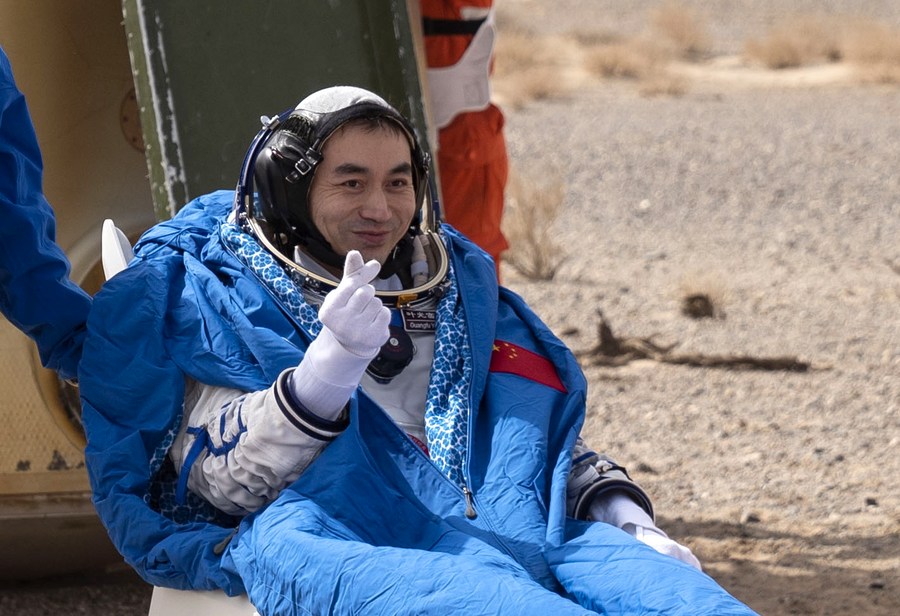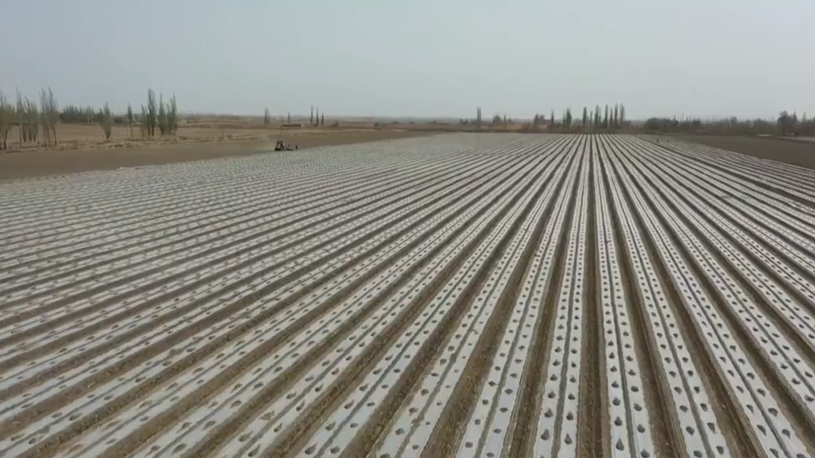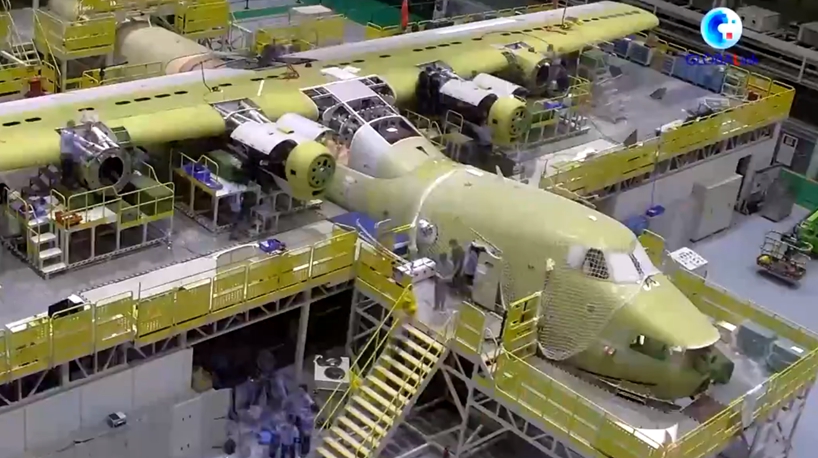
Astronaut Zhai Zhigang is out of the return capsule of the Shenzhou-13 spaceship at the Dongfeng landing site in north China's Inner Mongolia Autonomous Region on April 16, 2022. (Xinhua/Lian Zhen)
BEIJING, April 16 (Xinhua) -- Three Chinese astronauts of the Shenzhou-13 manned spaceship have completed their six-month space station mission and returned to Earth safely on Saturday.
The mission marks that China has completed the verification of key technologies of its space station, and also sets a record for Chinese astronauts' duration in orbit, said the China Manned Space Agency (CMSA).
Shenzhou-13's return capsule, carrying astronauts Zhai Zhigang, Wang Yaping and Ye Guangfu, touched down at the Dongfeng landing site in north China's Inner Mongolia Autonomous Region at 9:56 a.m. (Beijing Time).
The Shenzhou-13 manned mission was a complete success, the CMSA announced.

Astronaut Wang Yaping is out of the return capsule of the Shenzhou-13 spaceship at the Dongfeng landing site in north China's Inner Mongolia Autonomous Region on April 16, 2022. (Xinhua/Lian Zhen)
The return capsule separated from the spaceship's orbiting capsule at 9:06 a.m. under the command of the Beijing Aerospace Control Center. The braking engine of the return capsule was ignited at 9:30 a.m., followed by the separation of the return capsule from the propelling capsule.
After the return capsule landed successfully, the ground search team arrived at the landing site. The medical personnel confirmed that the astronauts were in good health, after the hatch of the return capsule was opened.
The Shenzhou-13 spaceship was launched from the Jiuquan Satellite Launch Center in northwest China on Oct. 16, 2021, and later docked with the space station core module Tianhe.
After the docking, the three astronauts entered the core module and began their six-month stay in space.

Astronaut Ye Guangfu is out of the return capsule of the Shenzhou-13 spaceship at the Dongfeng landing site in north China's Inner Mongolia Autonomous Region on April 16, 2022. (Xinhua/Cai Yang)
During the mission, the crew performed extravehicular activities (EVAs) twice. They conducted a number of scientific and technological experiments, including manual remote operation and module transfer supported by the robotic arm.
They verified crucial technologies for the construction and operation of the space station to support long-term stays by astronauts, the recycling and life-support system, supply of space materials, extravehicular activities and operations, and in-orbit maintenance.
The crew members also delivered two live classes from the space station and conducted a series of activities including science popularization. ■












